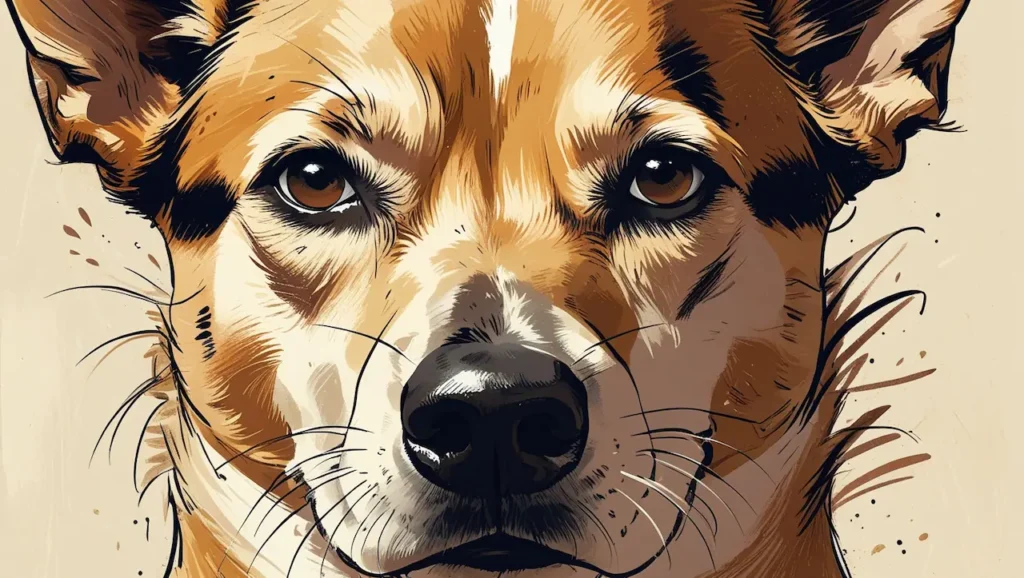Running is a lifestyle that blends physical challenge with mental clarity, and for many, a canine companion elevates the experience. The right dog breed can match your stride, push your endurance, and turn solitary runs into shared adventures. The best breeds for runners combine stamina, agility, and an innate love for movement, while also enriching your life with loyalty, motivation, and joy.
Below, we explore 10 dog breeds ideal for runners, detailing their physical attributes, running-specific benefits, and how they enhance your life as partners. Drawing from your interest in working dog breeds and canine behaviors, this guide also considers how these breeds align with active lifestyles and behavioral needs.
1. Labrador Retriever

Labrador Retrievers, historically bred for retrieving game in rugged terrains, are athletic powerhouses. Their muscular build, boundless energy, and steady gait make them exceptional for long-distance running. Labs have a natural endurance that suits runners tackling moderate to lengthy routes, and their adaptability thrives on varied surfaces, from pavement to trails.
Labs comfortably handle 5-10 mile runs, maintaining a consistent pace ideal for runners aiming for steady-state cardio. Their strong joints and balanced frame reduce injury risk during repetitive motion, while their trainability ensures they heed commands like “heel” or “stay,” keeping runs smooth and safe. Their water-resistant coat makes them resilient in wet or muddy conditions, perfect for trail runners.
Labs are affectionate, social dogs whose enthusiasm for runs mirrors their love for human connection. Their playful demeanor—seen in their tendency to lick as a sign of affection, as you’ve noted with your dog—adds warmth to daily outings.
Labs thrive on routine, motivating you to lace up even on tough days. Their versatility extends beyond running, as they enjoy fetch or swimming, enriching your active lifestyle. Historically, Labs excelled as working dogs, retrieving for hunters, which ties to their dependable, task-driven nature as running partners.
Labs need mental stimulation to curb behaviors like excessive licking or grass-eating, which you’ve mentioned. Puzzle toys can complement runs to keep them engaged.
2. Border Collie
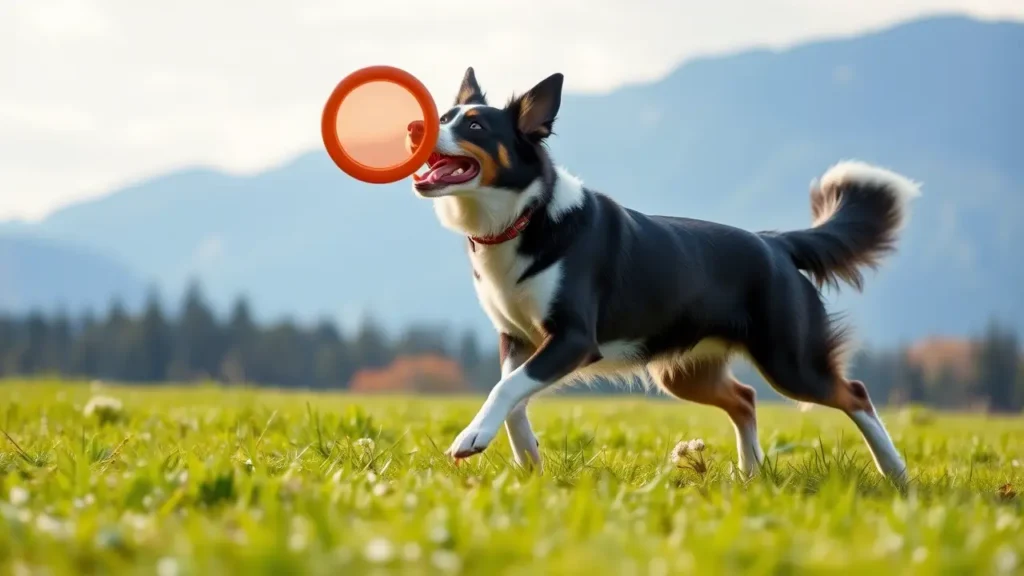
Border Collies, developed for herding sheep in the hilly Scottish borders, are the epitome of agility and intelligence. Their lean, muscular frame and relentless drive make them perfect for runners. Their exceptional stamina stems from centuries of working long hours in demanding environments.
Border Collies excel in 8-12 mile runs, effortlessly handling sprints, intervals, or uphill climbs. Their quick reflexes and sharp focus allow them to dodge obstacles and adjust to sudden route changes. Their herding instinct keeps them close, reducing the need for constant leash corrections.
Running with a Border Collie is a mental and physical partnership. Their intelligence, noted in their historical role as precise herders, demands engagement, making runs interactive as they respond to cues. Their loyalty fosters a deep bond, and their high energy pushes you to challenge yourself. To address potential boredom, runs provide essential stimulation.
Their intensity requires runners to match their energy. Daily runs prevent restlessness.
3. Australian Shepherd
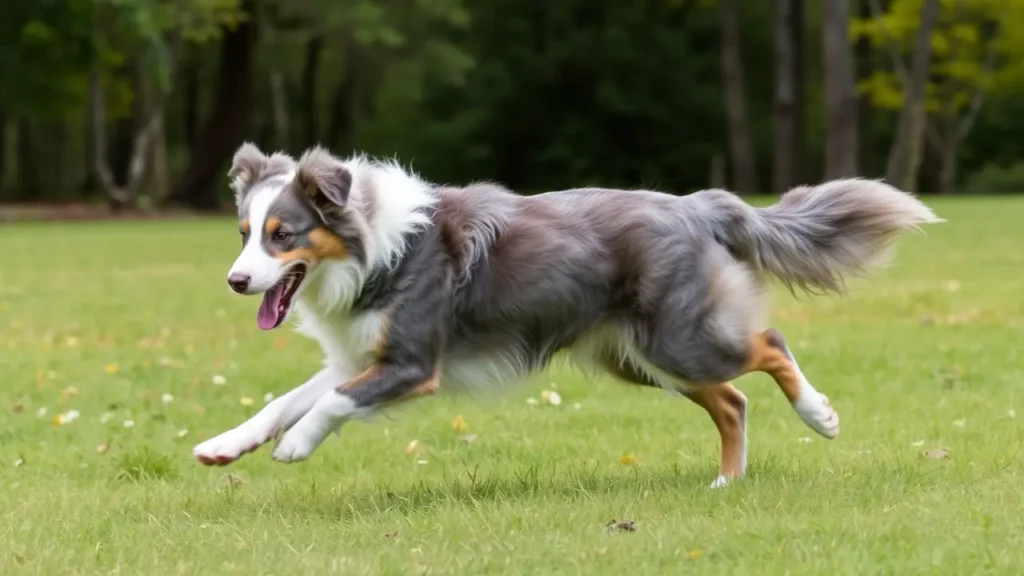
Australian Shepherds, bred for herding in the American West, combine agility, endurance, and a tireless work ethic. Their medium-sized, muscular build and quick reflexes suit dynamic running styles, from trail sprints to steady jogs. Their thick coat protects against rough terrain, reflecting their rugged origins.
Aussies manage 6-10 mile runs with ease, excelling on trails where their nimbleness navigates rocks. Their high stamina supports runners pushing for distance, and their alertness ensures they stay in sync. Their herding background makes them responsive to direction.
Australian Shepherds are loyal companions whose energy infuses runs with excitement. Their historical role herding cattle honed their focus and teamwork. They thrive on shared goals, boosting your motivation. Their playful side—potentially expressed through licking as affection—adds fun to post-run bonding. Runs help curb boredom, a factor in grass-eating and licking, aligning with your interest in managing such behaviors.
Aussies need varied activities to stay content. Incorporating runs with training and interactive toys keeps them balanced.
4. Vizsla
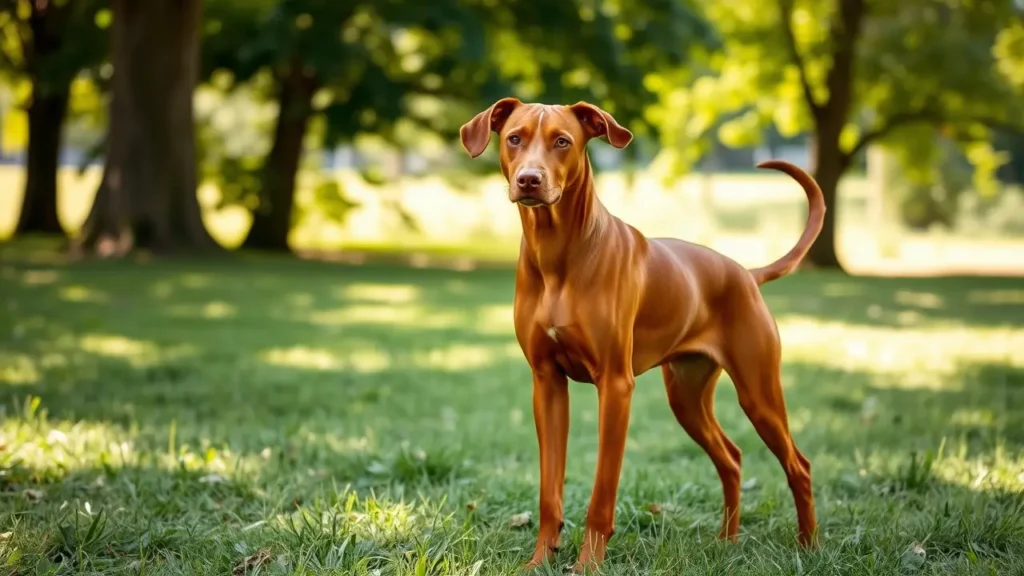
Vizslas, Hungarian hunting dogs, are lean, elegant athletes with remarkable stamina. Their smooth, efficient gait and love for exercise make them natural running companions. Bred to hunt alongside humans, their endurance and lightweight build suit long, consistent runs.
Vizslas sustain 8-12 mile runs at a steady pace. Their flexible joints and minimal body fat reduce strain, making them durable for frequent runners. Their hunting instinct keeps them alert, ensuring they stick close without wandering.
Known as “Velcro dogs” for their devotion, Vizslas make runs feel like shared missions. Their affectionate nature strengthens your bond, as you’ve explored with your dog. Their sleek, rust-colored coat and graceful stride add aesthetic joy to outings. Historically, Vizslas worked closely with hunters, a trait that translates to their cooperative, uplifting presence, motivating you to hit the trail.
Vizslas crave companionship and may become anxious if left alone too long. Regular runs and bonding activities like puzzle toys address this.
5. Dalmatian
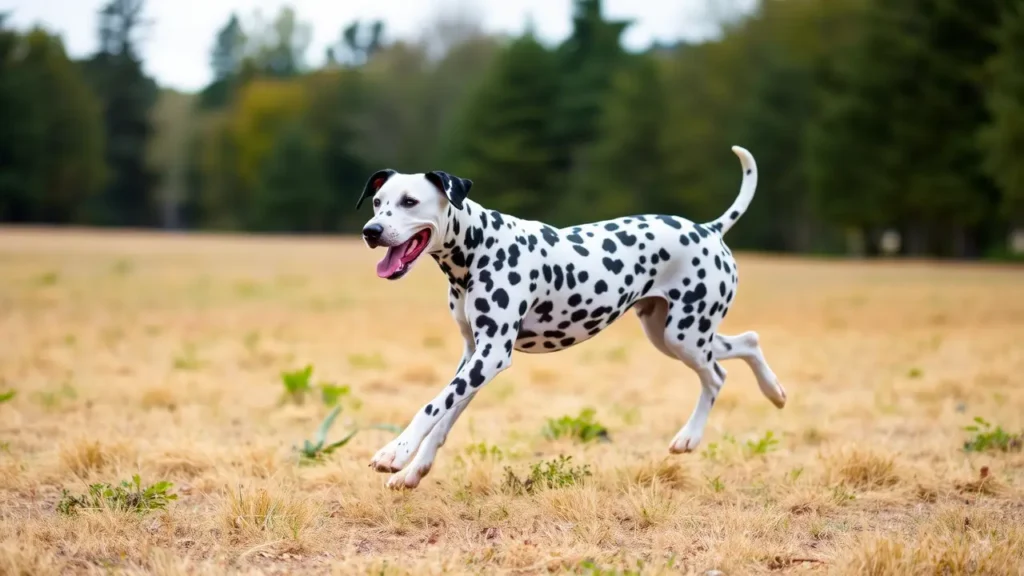
Dalmatians, bred to run alongside horse-drawn carriages, have a unique history of endurance. Their athletic build, with long legs and a deep chest, supports speed and stamina, ideal for runners who push the pace. Their iconic spotted coat reflects their distinctive role as working dogs.
Dalmatians manage 6-10 mile runs, maintaining a strong, even stride suited for moderate-to-fast paces. Their carriage-running heritage equips them for consistent rhythms, and their resilience handles varied weather. They’re alert but trainable, staying focused on the route.
Dalmatians bring playful energy to runs, their spirited nature lifting your mood. Their loyalty, rooted in their historical guard-dog roles, ensures they stay by your side. Their expressive behaviors add warmth to your partnership. Runs channel their energy, reducing unwanted habits.
Dalmatians need early training to manage their exuberance. Regular runs and mental stimulation prevent boredom-driven behaviors.
6. German Shorthaired Pointer

German Shorthaired Pointers combine boundless energy with a sleek, powerful build. Their endurance and agility, honed for tracking game across vast fields, make them ideal for runners tackling long distances or open terrains.
GSPs cover 10-15 miles, thriving on trails where they can stretch their legs. Their smooth, efficient stride conserves energy, and their focus keeps them aligned with your pace. Their short coat suits warmer climates, and their athleticism handles uneven ground.
GSPs infuse runs with enthusiasm, their hunting drive making each outing feel like an exploration. Their affectionate, protective nature deepens your bond, with behaviors like licking signaling trust, as you’ve noted. Historically, GSPs worked closely with hunters, a trait that translates to their reliable, engaging presence. They motivate you to explore new routes, enriching your running life.
Their high energy demands consistent exercise. Runs paired with activities like fetch or puzzle toys, as you’ve explored, keep them content.
7. Weimaraner

Weimaraners are athletic marvels with speed, grace, and endurance. Their lean muscles and high energy suit runners who crave challenging, varied runs. Their silver-gray coat and regal bearing reflect their aristocratic hunting heritage.
Weimaraners handle 8-12 mile runs, excelling at steady or interval paces. Their agility navigates trails or urban obstacles, and their hunting instinct keeps them focused. Their lightweight frame minimizes joint stress, ideal for frequent runners.
Weimaraners are devoted partners whose intelligence creates a dynamic running bond. Their historical role tracking game honed their attentiveness. Their affectionate gestures reinforce closeness, aligning with your interest in bonding behaviors. Their sleek presence adds a sense of pride to runs, pushing you to stay consistent.
Weimaraners can be sensitive to isolation. Regular runs and mental stimulation prevent anxiety-driven habits.
8. Rhodesian Ridgeback

Rhodesian Ridgebacks, bred for hunting lions in African savannas, are strong, independent dogs with exceptional endurance. Their muscular build and steady pace suit long-distance runners, and their distinctive dorsal ridge reflects their rugged origins.
Ridgebacks manage 6-10 mile runs, their smooth stride conserving energy for distance. They handle heat well, ideal for warm-weather runners, and their strength navigates rough terrain. Their independence balances with trainability, keeping them reliable on trails.
Ridgebacks bring calm confidence to runs, their protective nature enhancing safety on remote routes. Their historical role as guard dogs fosters loyalty, making them steadfast partners. Their reserved affection, possibly shown through subtle gestures like licking, deepens your bond, as you’ve explored. Runs channel their energy, reducing boredom-related behaviors like grass-eating.
Ridgebacks need firm training to manage their independence. Runs and enrichment activities keep them balanced.
9. Siberian Husky
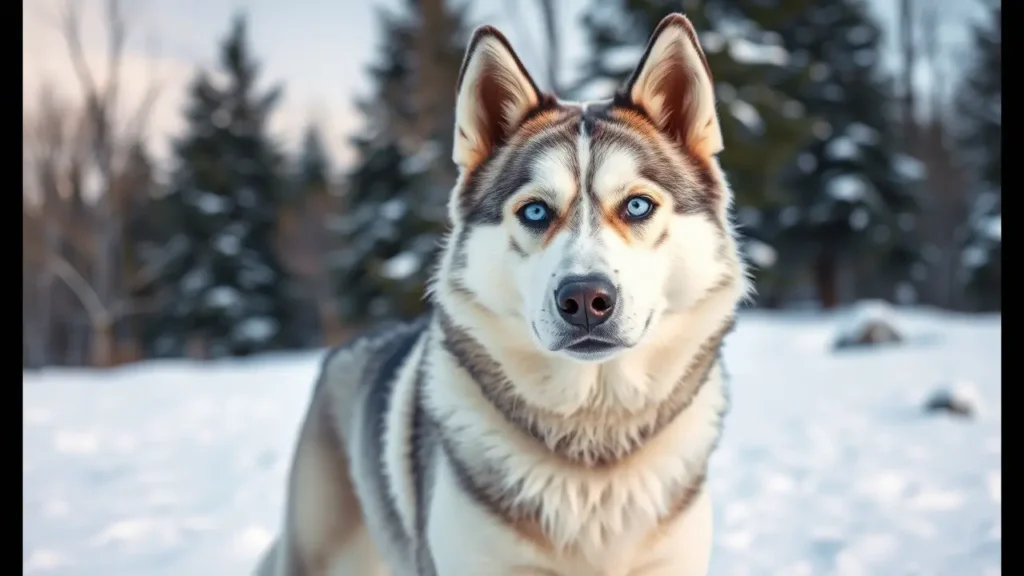
Siberian Huskies, bred for sledding across Arctic expanses, are born to run. Their stamina, efficient gait, and love for cooler weather make them perfect for dedicated runners. Their wolf-like appearance and thick coat reflect their endurance in harsh conditions.
Huskies cover 10-15 miles, thriving in cold climates or early morning runs. Their steady, energy-efficient stride suits long routes, and their pack mentality keeps them close. Their padded feet handle rough terrain, ideal for trail runners.
Huskies add a wild, free-spirited vibe to runs, their sledding heritage making each outing feel epic. Their friendly nature, possibly expressed through licking, fosters camaraderie, as you’ve noted. Historically, Huskies worked in teams, a trait that translates to their cooperative running style. Their striking looks and enthusiasm inspire you to embrace the journey.
Huskies can be independent and prone to wandering. Leash training and runs in cooler conditions maximize their potential.
10. Jack Russell Terrier

Jack Russell Terriers, small but mighty hunting dogs, have explosive energy and surprising endurance. Their tenacity and compact build suit runners who enjoy shorter, faster runs or urban settings. Their white coat with brown markings reflects their scrappy charm.
JRTs handle 4-6 mile runs at a brisk pace, perfect for interval training or city jogs. Their agility navigates tight spaces, and their stamina belies their size. Their hunting instinct keeps them alert, minimizing distractions.
JRTs bring humor and heart to runs, their bold personality shining through. Their historical role chasing foxes honed their determination, making them spirited partners. Their loyalty, possibly shown through licking, adds warmth, as you’ve explored. Runs curb their high energy, reducing behaviors like grass-eating or excessive licking due to boredom.
JRTs need consistent exercise to manage their intensity. Short runs paired with puzzle toys keep them engaged.
Additional Insights
These breeds align with your interest in working dogs, as discussed previously, with many—like the Labrador, Border Collie, and Husky—having historical roles that shaped their endurance and drive. Their running prowess ties to their evolution as task-driven companions, from herding to hunting to sledding. Addressing your concerns about behaviors like licking or grass-eating, regular runs with these breeds channel energy and reduce boredom or anxiety, key triggers you’ve mentioned. Puzzle toys, as we explored, complement running to keep them mentally satisfied.
Each breed offers unique running benefits, from the Lab’s steady pace to the Husky’s Arctic stamina, catering to different runner profiles. Their companionship transcends exercise, fostering motivation, safety, and emotional connection. For runners, these dogs transform workouts into shared rituals, blending physical challenge with the joy of partnership.
These 10 breeds are exceptional running partners, each with physical and behavioral traits that enhance your runs. Beyond their stamina and agility, they enrich your life with loyalty, motivation, and a sense of adventure. By matching a breed to your running style and lifestyle, you gain a companion who makes every mile meaningful.



